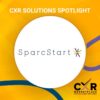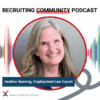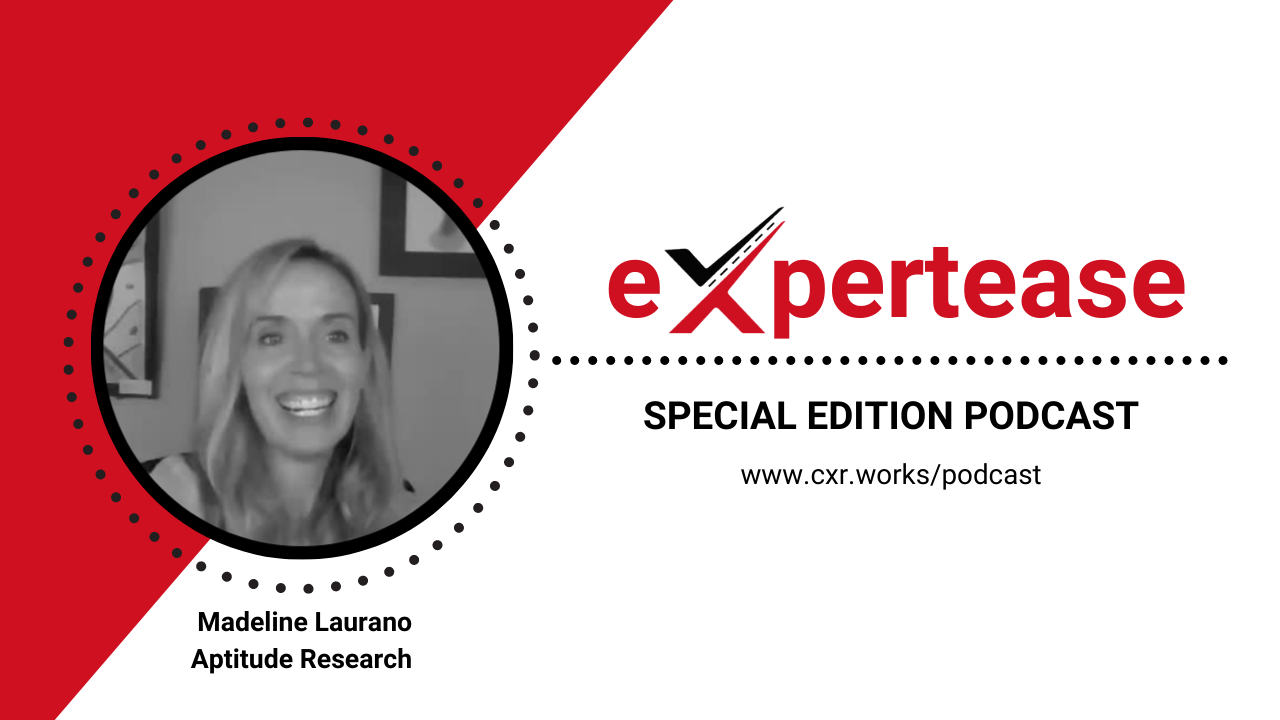Announcer:
Welcome to the CXR channel, our premier podcast for talent acquisition and talent management. Listen in as the CXR community discusses a wide range of topics focused on attracting, engaging, and retaining the best talent. We’re glad you’re here.
Chris Hoyt, CXR:
Hello, everyone, and welcome to the CareerXroads podcast and our special segment that we call Expertise. I’m Chris Hoyt, President of CXR, and today we’re going to grab 10 minutes with Heidi Hite, Senior Recruitment Marketing Program Manager at Sleep Number Corporation. We’re going to talk about the tactical elements of programmatic advertising.
These segments are typically delivered in a snackable format. So whether you’re sipping your morning coffee or knocking out a mile on the treadmill, you’ll hear us discuss any number of issues before you even finish. These topics come directly from talent leaders across hundreds of companies and cover everything from ethics in recruiting to DE&I, employee wellness, and retention.
If you’re interested in sharing your thoughts on what recruiting leaders should focus on in 2021, take part in our new Priorities Benchmark, open to everyone at www.cxr.works under the Research and Reports section.
If you’re attending live today, feel free to use the chat feature to ask Heidi a question or two. If we don’t get to it, or you think of something later, you can always join us in our Open Exchange at www.cxr.works/talenttalks.
So with all that—Heidi, good morning! How are you today?
Heidi Hite, Sleep Number Corporation:
Good morning! Good, you?
Chris Hoyt, CXR:
I’m doing very well, thank you. Is it still snowing where you are?
Heidi Hite:
It was recently, but not right now—thank goodness.
Chris Hoyt:
Minneapolis. You can’t hate Minneapolis… except for the snow.
Heidi Hite:
Agree.
Chris Hoyt:
So, Heidi, to level set—what’s your area of responsibility at Sleep Number, and how does programmatic advertising fit into that?
Heidi Hite:
I support the recruitment marketing space—essentially, advertising for jobs. But it’s more than that. We focus on value streams and understanding why candidates would choose Sleep Number and why they would stay.
A large part of my role involves programmatic advertising, which is a key tool we use to open the top of the funnel—from brand awareness to driving applications. As jobs circulate through various digital channels, we want to ensure we show up effectively while still supporting our mission, equality efforts, and other key values.
My work blends art and science. I look at data—app-to-hire ratios, work segments by region, and where we need to show up from a voice and value perspective. I bring those together in a strategic way.
Chris Hoyt:
I love that. But in layman’s terms, what exactly does programmatic advertising do for job listings?
Heidi Hite:
It’s essentially a system that allocates jobs to the right job boards at the right time, using data to set things up. Then it uses analytics based on candidate behavior to assess whether a board was the right investment. If it’s not, the system automatically shifts based on that data.
We start by identifying what segments we’re targeting and what data we want to use—app-to-hire ratio is a key metric. Then we align with candidate behavior and adjust based on the results we see by job and region. It’s very hands-on—I’m reviewing this weekly, sometimes daily.
Chris Hoyt:
So I’m picturing you behind the scenes, pulling levers…
Heidi Hite:
I’m a puppeteer!
Chris Hoyt:
Is it all manual, or is some of it automated?
Heidi Hite:
I work with an external advertising agency. We have an analyst on our account who pulls those levers. I act as the face of the business—taking in recruiter feedback like “I’m not getting enough apps,” or “These aren’t the right apps”—and I prioritize needs across the company. Then I share that with our analyst and analyze the data in real time to adjust our campaigns midstream as needed.
Chris Hoyt:
Okay, so let’s break down a scenario. Say we have an open role and historically need 10 applications to make one hire. If the job isn’t performing, what behaviors are you looking at to make adjustments?
Heidi Hite:
First, programmatic is not a short-term solution. If you need a hire tomorrow, this isn’t it. It’s a strategic, long-term approach. The system gets smarter over time, so I’d suggest no less than a six-month strategy.
If your app-to-hire ratio is 9:1, I’d recommend starting at 12:1 to give the system enough data. That way, we’re not losing traction early. We might invest more upfront, then optimize as we go for better long-term performance.
Chris Hoyt:
Got it. And what if you don’t have app-to-hire data? Is it just guesswork?
Heidi Hite:
If you don’t have that data, start by analyzing your business. Programmatic works well for like-profiles—roles hired across multiple locations. If your hiring is more varied, start with a small, focused pilot to build data before expanding.
Chris Hoyt:
How dependent is programmatic on browser cookies?
Heidi Hite:
Great question. The world is shifting under our feet. I’ve been closely watching this with our agency. Cookies are now more mainstream—people are getting used to accepting them everywhere they go.
So far, my data streams look consistent. I’m watching to see if users start rejecting cookies more often, but for now, we haven’t seen dramatic changes.
Chris Hoyt:
Right—Google announced plans to end third-party cookie support in Chrome by 2022. But then they introduced FLoC—Federated Learning of Cohorts—which seems like cookies-lite. Are you and your agency talking about this?
Heidi Hite:
We are, but it’s tough to anticipate everything. I remember when Google for Jobs launched—everyone thought it would be game-changing, but business continued as usual. I’m keeping an eye on it, but it’s not changing how I work today.
Chris Hoyt:
Yeah, Google still uses cookies for their own tracking—over $130 billion annually from PPC ads. So, final question: what ad agency and software are you using? Have you tried others?
Heidi Hite:
I’ve mostly used Radency—formerly TMP Worldwide. They have their own ad platform that’s improved a lot over the years. What I like is their strong partnerships with major job boards, which still deliver strong returns, plus their 10,000+ online network for broader reach. That’s especially valuable for DE&I and brand awareness. I think you need both worlds to be successful. I’m open to exploring other options, but this has been my go-to.
Chris Hoyt:
Yeah, and during the pandemic, this is probably the first year we haven’t heard people yelling that job boards are dead.
Heidi Hite:
Nope, they’re still here. You just have to use them more effectively.
Chris Hoyt:
Absolutely. Thanks for clearing that up. And thank you, Heidi, for sharing your experience and insights. We really appreciate your time.
Heidi Hite:
This has been fun! I hope to see you all soon—I love being part of this community.
Chris Hoyt:
We love having you. And for those joining us next week, we’ll be talking with keynote speaker and author Jason Lauritsen, who’ll share thoughts on galvanizing yourself against failure. He’s got a great story lined up.
Until then, if you have more questions for Heidi, head over to CXR.works/talenttalks. We’ll post your questions and get those answers to you.
Thanks, everybody!
Announcer:
Thanks for listening to the CXR channel. Please subscribe to CXR on your favorite podcast platform and leave us a review. Learn more at CXR.works, Facebook.com/CareerXroads, Twitter.com/CareerXroads, and on Instagram @careerxroads. Catch you next time.










